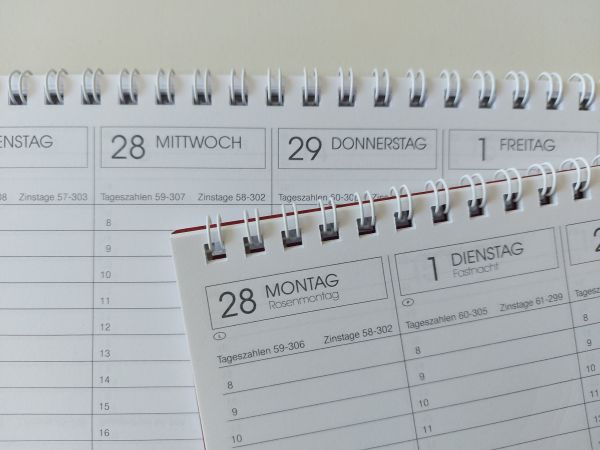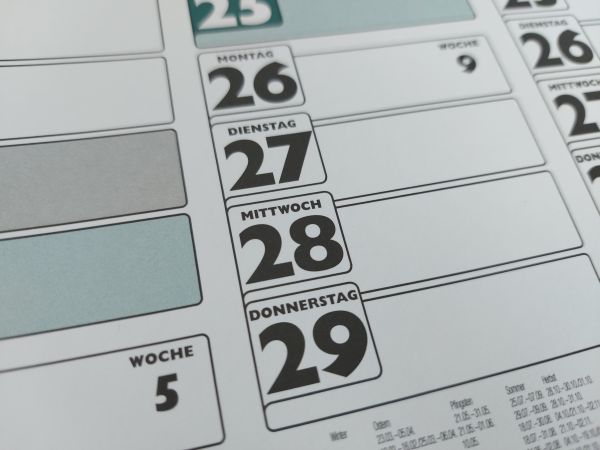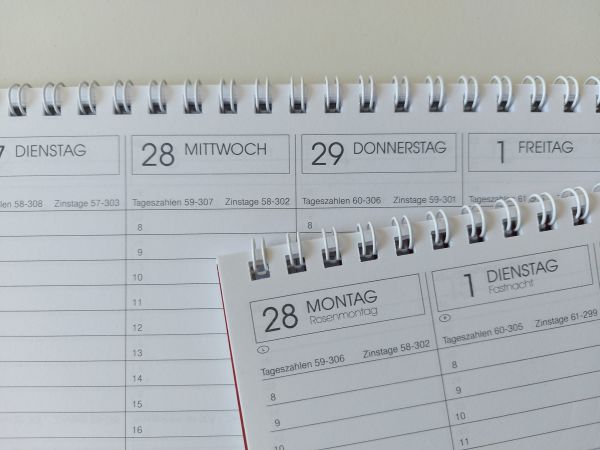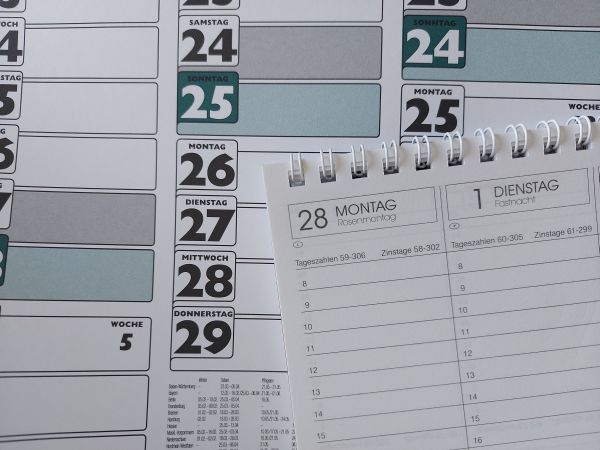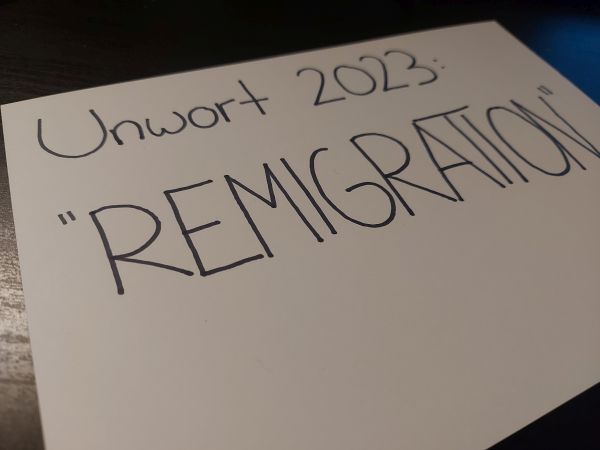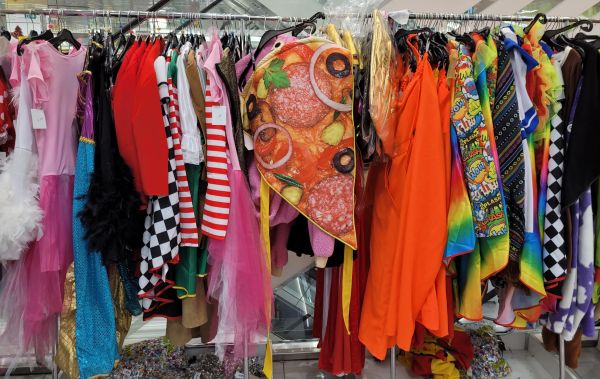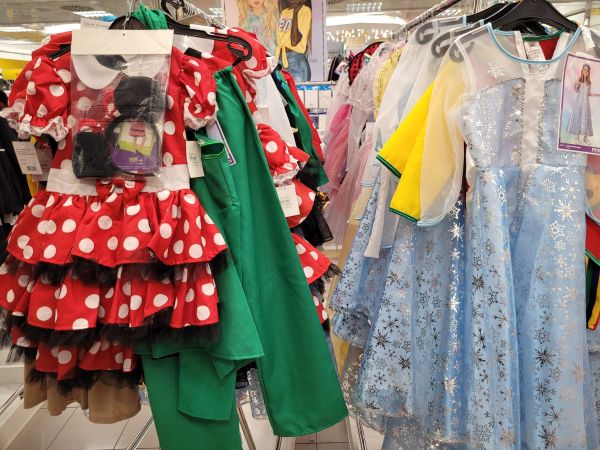از اولا محفوظ و آرنه شیک١ ویتامین د یک ماده مغذی حیاتی برای تشکیل و حفظ استخوانهای سالم است، زیرا جذب کلسیم، جزء اصلی استخوانها را تنظیم میکند. همچنین بر عملکردهای متعددی در سلولهای بدن تأثیر می گذارد، مانند مهار التهاب، محافظت در برابر آسیب سلولی یا حمایت از سیستم ایمنی، عملکرد ماهیچه ها و فعالیت سلول های مغزی. منابع طبیعی ویتامین د محدود است، اما میتوانیم آن را از ماهیهای چرب یا از طریق تبدیل مواد شیمیایی در پوست در زیر نور مستقیم خورشید دریافت کنیم. میزان تولید ویتامین د به عوامل مختلفی از جمله زمان روز، فصل، موقعیت… Read More
Category: TÜNEWS DIVERSE
چرا ۲۹ فوریه وجود دارد
توسط برایت ایگبینوویا و اوته کایزا زابینه در ۲۹ فوریه، یعنی ۱۸ ساله خواهد شد- گرچه او در سال ۱۹۵۲ متولد شد و در واقع ۷۲ سال سن دارد چطور ممکنه؟ زابینه در یک روز کبیسه به دنیا آمد – مانند حدود ۵ میلیون نفر در سراسر جهان که حدود ۵۵۰۰۰ نفر از آنها در آلمان هستند روز کبیسه چیست؟ این روز اضافی در یک سال کبیسه به ماه فوریه اضافه می شود. بهمن امسال به جای ۲۸ روز ۲۹ روز و سال کبیسه به جای ۳۶۵ روز در مجموع ۳۶۶ روز دارد. نقطه شروع تقویم ژولیانی از ۴۵ قبل… Read More
لماذا هناك 29 فبراير؟
تبلغ سابينة سن الرشد في 29 فبراير، على الرغم من أنها وُلدت في عام 1952 وبالتالي تبلغ من العمر الفعلي 72 عامًا. كيف يمكن ذلك؟ إن سابينة وُلدت في يوم كانت فيه هناك سنة كبيسة – مثل حوالي 5 ملايين شخص حول العالم، منهم حوالي 55.000 في ألمانيا ما هي السنة الكبيسة؟ يتم إضافة هذا اليوم الإضافي إلى شهر فبراير خلال السنة الكبيسة. لذا في هذا العام، يكون فبراير 29 يومًا بدلاً من 28 يومًا، ويصبح إجمالي أيام السنة الكبيسة 366 يومًا بدلاً من 365 يومًا كانت نقطة البداية هي التقويم اليولياني منذ عام 45 قبل الميلاد. كان هذا التقويم… Read More
Why February 29 exists
By Bright Igbinovia and Ute Kaiser Sabine turns 18 on February 29—even though she was born in 1952 and is actually 72 years old. How can that be? Sabine was born on a leap day—like around 5 million people worldwide, including around 55,000 in Germany. What is a leap day? This extra day is added to the month of February during a leap year. This year, February has 29 days instead of 28 and the leap year has a total of 366 days instead of 365. The starting point was the Julian calendar from 45 BC. This solar calendar was… Read More
Wie sich Hijab und Niqab auf die Aufnahme von Vitamin D auswirken
Von Oula Mahfouz und Arne Schick1 Vitamin D ist ein entscheidender Nährstoff für die Bildung und den Erhalt gesunder Knochen, da es die Aufnahme von Calcium, dem Hauptbestandteil der Knochen, reguliert. Es beeinflusst auch zahlreiche Funktionen in den Körperzellen, die beispielsweise Entzündungen hemmen, vor Schädigung von Zellen schützen oder das Immunsystem, die Muskelfunktion und die Gehirnzellenaktivität unterstützen. Natürliche Vitamin-D-Quellen sind begrenzt, aber wir können es aus fettreichen Fischen oder durch die Umwandlung von chemischen Substanzen in der Haut unter direkter Sonneneinstrahlung aufnehmen. Die Menge an produziertem Vitamin D hängt von verschiedenen Faktoren ab, darunter Tageszeit, Jahreszeit, geographischer Standort, Färbung der… Read More
زاها حدید: معمار درخشان با ریشه های شرقی
از: سمیر ابراهیم زاها حدید (۱۹۵۰–۲۰۱۶)، معمار عراقی با ملیت بریتانیایی، دنیای معماری را متحول کرد و در بسیاری از شهرهای جهان اثری مشهود از خود بر جای گذاشت. او در بغداد در خانواده ای ثروتمند بزرگ شد. پدر او، محمد حدید، سیاستمدار برجسته و وزیر دارایی سابق عراق بود. او حتی در کودکی اتاق کودک خود را دوباره طراحی کرد که توسط یک نجار به عنوان الگویی برای بسیاری از اتاق های کودکان دیگر در بغداد اجرا شد. او در یازده سالگی می خواست معمار شود. زاها حدید به خاطر استایل آینده نگر و متمایزش معروف است. او در… Read More
Warum es den 29. Februar gibt
Von Bright Igbinovia und Ute Kaiser Sabine wird am 29. Februar volljährig, also 18 Jahre alt – obwohl sie 1952 geboren wurde und damit eigentlich 72 Jahre alt ist. Wie kann das sein? Sabine ist an einem Schalttag auf die Welt gekommen – wie weltweit etwa 5 Millionen Menschen, davon rund 55.000 in Deutschland. Was ist ein Schalttag? Dieser zusätzliche Tag wird dem Monat Februar während eines Schaltjahres hinzugefügt. In diesem Jahr hat der Februar also 29 statt 28 Tage und das Schaltjahr insgesamt 366 statt 365 Tage. Ausgangspunkt war der Julianischen Kalender seit 45 vor Christus. Dieser Sonnenkalender richtete… Read More
هیئت داوران (“Remigration”) را به عنوان بدترین کلمه برای سال ۲۰۲۳ انتخاب کردند
نوشته اوته کایزا ”Remigration” در آلمانی به معنى مهاجرت مجدد است. در تحقیقات مهاجرت عمدتاً برای بازگشت داوطلبانه استفاده می شود. اما اکنون احزاب راست (مانند ا اف د) و همچنین جنبشهای راست و راست افراطی (مانند جنبش هویت طلب) از آن برای پنهان کردن مقاصد واقعی خود استفاده میکنند: اخراج اجباری یا حتی اخراج دستهجمعی افرادى كه « ظاهراً داراى رنگ پوست یا اصالت غير آلمانى هستند، حتی اگر شهروند آلمان باشند. اینگونه است که یکی از اعضای هیئت داوران کمپین «کلمه بد سال» توضیح داد که چرا اصطلاح جنگی راستگرایانه بازگشت مهاجرت را به عنوان کلمه بد سال… Read More
Narri-Narro: about the origins of carnival
By Oula Mahfouz Whether it’s Fasnet, Fasching or Carnival: the jesters are ready for their most important days of the year. The highlight of the carnival season begins on “schmotziger Donnerstag”. This year it is on February 8. In the days that follow, there are parades, children dress up and paint their faces, and some adults also hide their faces behind scary masks and slip into colorful costumes. On Ash Wednesday, February 14, it’s all over. The biggest parade in the region takes place on Sunday, February 11 in Rottenburg. The carnival tradition is firmly anchored in the Christian calendar… Read More
Narri-narro: Die Narren sind los
Von Oula Mahfouz Ob Fasnet, Fasching oder Karneval: Die Narren stehen in den Startlöchern für ihre wichtigsten Tage im Jahr. Am „schmotzigen Donnerstag“ beginnt der Höhepunkt der Fastnachtszeit. Das ist dieses Jahr am 8. Februar. Es gibt in den folgenden Tagen Umzüge, Kinder verkleiden sich und malen sich das Gesicht an, auch manche Erwachsenen verbergen ihre Gesichter hinter schaurigen Masken und schlüpfen in bunte Kostüme. Am Aschermittwoch, den 14. Februar, ist dann alles vorbei. Der größte Umzug in der Region findet am Sonntag, 11. Februar in Rottenburg statt. Die närrische Tradition ist fest im christlichen Kalender verankert und bildet den… Read More


